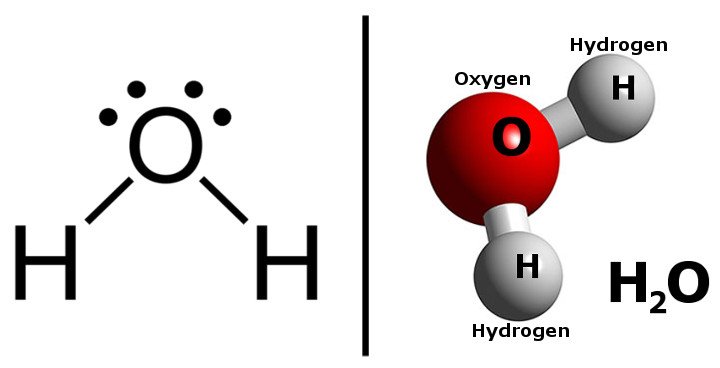Table of Contents (click to expand)
Water evaporates at room temperature because the molecules at the top of the liquid have less intermolecular attraction than those within the bulk. When the top layer is exposed to sunlight, some molecules gain enough kinetic energy to escape into the atmosphere. The humidity also affects how easily water can evaporate. If the air is already saturated with water vapor, evaporation will stop.
We’ve been taught in school that when water boils, it changes phase from liquid to vapor. To cause this change, a high temperature is required, called the boiling point. For water, this point is 100oC. However, recall that when it rains, puddles evaporate after the skies clear, especially when the sun comes out. In evaporation, the phase of water also changes from liquid to vapor, and this happens at temperatures that are nowhere near 100oC.
So… why does this happen?
The answer lies in the physical and chemical properties of water molecules and the bonds formed between those molecules (intermolecular bonds).
Chemical Properties Of Water Molecules
A water molecule is composed of two Hydrogen atoms attached to one Oxygen atom. The bonds between the O and H atoms are formed by the sharing of electrons. These bonds are called covalent bonds. Every element tends to attain the energetically lowest state (i.e., the most stable state) by losing or gaining electrons to reach the nearest noble gas configuration.
Oxygen contains six electrons in the outermost shell and requires two electrons to complete the octet and enter the configuration of the noble gas Neon. Hydrogen has one electron in its outermost shell and, by gaining one electron, it can attain the configuration of the noble gas Helium. Thus, one Oxygen atom shares two electrons and two Hydrogen atoms share one electron each to form one molecule of water, i.e., H2O.

Oxygen has a high tendency to attract electrons towards itself. This property is called electronegativity. Due to high electronegativity, electrons spend more time near O, and a partial negative charge develops on O. Likewise, a partial positive charge develops on H. The geometry of a water molecule is such that there is a separation of positive (near two H atoms) and negative charges (at O).
When two water molecules are near each other, the partially negative O of one molecule tends to attract the partially positive H atom of the other molecule, resulting in a weak bond, called a Hydrogen Bond. This bond exists between two different molecules (intermolecular bond). Since a hydrogen bond is weak, less energy is required to break it, which is why water remains a liquid at room temperature.
Also Read: What Are The Bubbles Made Of When Water Boils?
Temperature And Molecular Energy
Temperature is a measure of the average kinetic energy possessed by a molecule. The higher the temperature, the greater the average energy, and the easier it is for molecules to overcome intermolecular attraction and move more freely. For a liquid to change phase to vapor, two forces need to be overcome.

The first is the intermolecular attraction from nearby molecules, called cohesive forces. The second is the downward pressure exerted by the atmosphere. When a liquid changes phase to vapor, its molecules have acquired sufficient kinetic energy to overcome all the intermolecular forces and also overcome the downward pressure exerted by the atmosphere around it.
Also Read: What Happens To A Gas When Its Pressure Is Increased?
Humidity
The amount of water vapor present in the atmosphere is called humidity. At any given temperature, the atmosphere can hold only a fixed amount of water vapor. The greater the temperature, the greater the amount of water vapor present in the atmosphere. The concentration of water vapor in the atmosphere has an upper limit, beyond which no water vapor can be held.
Evaporation At Room Temperature
Assume that water is spread thinly on a table. The molecules are arranged in layers. The molecules at the topmost layer experience attractive intermolecular forces only from the bottom and the sides, whereas molecules within the liquid bulk experience intermolecular attraction from all directions. Thus, the molecules at the top experience less net intermolecular forces than those within the bulk. As these intermolecular forces (Hydrogen Bonds) are weak, when the top layer is exposed to sunlight, some molecules gain sufficient kinetic energy to escape into the atmosphere at room temperature.

Moreover, the lower the humidity, the easier it is for liquid to evaporate. As evaporation continues, the concentration of water vapor in the atmosphere increases. Beyond a critical threshold, no more water vapor can be held by the atmosphere. This is called a saturated state. If the saturation state hasn’t been reached, evaporation continues.
Thus, a combination of humidity and high molecular energy makes it possible for some molecules at the surface to evaporate, even at lower temperatures!
Also Read: Are Evaporation And Boiling The Same?
How well do you understand the article above!

References (click to expand)
- Macleod, D. B. (1925). The kinetic theory of evaporation. Transactions of the Faraday Society. Royal Society of Chemistry (RSC).
- Humidity - National Geographic Society. National Geographic
- Saturated Vapor Pressure - Hyperphysics. Georgia State University
- 7.3: Hydrogen-Bonding and Water - Chemistry LibreTexts. LibreTexts
- electronegativity - Chemguide. chemguide.co.uk
- Kinetic Temperature, Thermal Energy - Hyperphysics. Georgia State University
